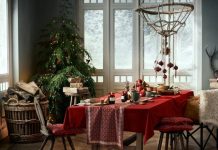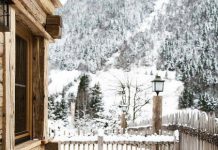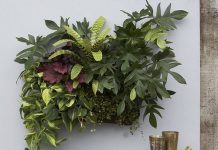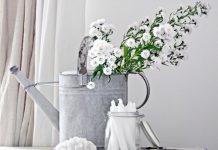Low light house plants are always on the wanted list for indoor gardeners. You may be thinking that all houseplants are low light tolerant, but this isn’t necessarily so. Although there are many shade tolerant indoor plant varieties that have been re-named house plants, at the same time, many plants grown specifically for the indoors, still require a fair amount of light.
Litle tips: Indoor gardens are a great way to create curb appeal to your house. If you maintain an indoor garden, try artificial turf to give your garden
the perfect ambiance it needs.
First off, let us define low-light, without getting too technical.
If you need a torch, night-goggles, or have to switch on the overhead lights – this is a dark area. Plants do not grow in the dark. In a low light area, if you can still cast a shadow – not talking silhouettes here, there are plants that will in fact grow in this amount of light. Don’t bother going any darker than this, just brighter.
Let us look at the difficult areas for your houseplants. Places like the end of a long hallway, the downstairs entertainment room, rumpus room, etc. Or, indeed, if you live in a place with very few windows.
We are talking about low-light tolerant plants. Not no-light. Plants do not grow in the dark. You can however, display your indoor plants in no light, or darkened areas. The trick to house plant survival in the dark, is to rotate them with your other plants, so that they will get filtered sunlight on a regular basis.
Rotating Your House Plants. This idea presumes you already have indoor plants growing in more favorable positions. Only leave a house plant in a dark area for a few days, five – at the most. Then rotate it out with your other houseplants. This means, take the plant that is currently getting the most light and put it in the darkened place.

Move all your other plants one spot closer to the brightest area. The plant you took from the dark area, is placed at the back of the houseplant queue, in the least lighted area. Yes, sort of like musical chairs.
Never take a plant from the dark and plonk it outside in the sun. Straight away, the leaves will burn and go crispy. Also, the shock will be the death of it. You must submit it to the sunlight again, in small doses.
Remember this, the longer a plant stays in a poorly lit or dark place, the more time it will need to recover. If it has not got back to full health by the time you have run out of other plants – get more. Don’t go putting an already weakened plant back into the dark recesses of your home.
This certainly is more work. However, if you don’t like the extra effort, or lifting, there are many life-like silk-plants available.
Best Low Light Indoor Plants
Here we will discuss a number of low light tolerant plants, that are also well suited to learner indoor gardeners. Mainly because they are very hard to kill.
Sanseviera – also known as Snake Plant or, Mother-In-Law’s Tongue.
This beastie can put up with all the neglect you can throw at it. An evergreen, with waxy, upright, strap-like leaves, dark green with light gray-green cross-banding and cream-colored edges. The leaves usually grow to 70–90 cm in length and 5–6 cm in width. Very, very, hardy and hard to kill. Do not plant outside.


Dracaena Fragrans – also known as Happy Plant, Corn Plant or Fortune Plant.
Starting at a rosette of leaves at the top, these long wide leaves arc gracefully as they mature. Usually white variegated. Smaller Happy Plants are often sold simply sitting in a bowl of pebbles, for stability. A fair indication of their hardiness.

Dracaena Marginata – also known as The Dragon Tree.
This plant puts out branches sparsely with age and can grow to about ten feet, if allowed. The common species has narrowing, red edged, stiff leaves. As the plant ages, the trunk takes on a very gnarled look.

The Dracaena family are mostly long-stemmed plants with decorative rosettes of strap-like foliage. Easily grown from cuttings or layering. If cuttings are laid down horizontally, it will shoot from multiple buds. Thrives on neglect.
Neanthe Bella – also commonly called the Parlor Palm.
The name comes from the fact that in the Victorian era, this was a most popular plant to have in one’s parlor. Leaves are erect when first emerging, to finally open as a graceful fan. As a prime low light plant, this palm is very hardy. Often sold as a terrarium plant due to its slow growth.

Aglonema – also known as Chinese Evergreen.
These plants will handle low light conditions, but perform better in moderate light. Having large dark green leaves, that are heavily marbled with white, cream or silver and white. An easy to-care-for plant. Never put it in direct sunlight.

Zamioculcas zamiifolia – otherwise known as the ZZ plant – has pretty much everything you can ask for from a house plant. It can handle low light, needs very little water, withstands changes in indoor air conditions and will stay green and glossy even if you forget to care for it for a little while.

Holly Fern – also known as Japanese Hollyfern.
Best choice for the apartment dweller, as it thrives with low humidity and a hot dry atmosphere. The name comes from the fronds, looking like Christmas holly. The fronds unfurl to 45 to 60 cm indoors. Handles low light well, dry air and drafts.

The Aspidistra – often called the Cast Iron plant.
Appropriately named, as it is one of the toughest and most adaptable of house plants. It has long, ribbed, deep green leaves, and there are variegated varieties. Difficult to accidently kill.





















